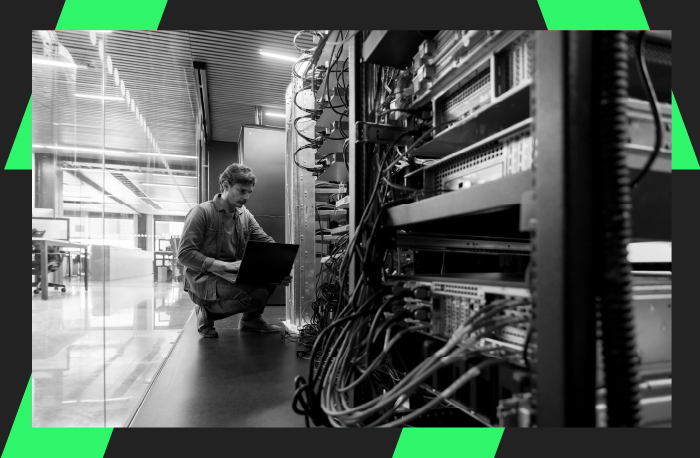Contents
CUSTOMER CHALLENGE
Senior Staff Network Analyst Joe Daniels works alongside the IT team at Southern Star Central Gas Pipeline to maintain an extensive communications network that includes over 100 routers and switches—some located in very remote and isolated locations. It is the IT group’s responsibility to ensure that the network components along every section of Southern Star’s sprawling pipeline infrastructure are tracked and under control at all times.
Microwave radio and satellite links provide the company with effective network redundancy. In the most remote locations where commercial high-speed data connectivity is unavailable, the company also relies on lower bandwidth terrestrial radio spurs to further extend network connectivity. For these isolated areas where the company often limits network traffic to include only the most critical data and control information, Daniels considers QoS to be especially important.
The network carries supervisory control and data acquisition (SCADA) information critical for continuous monitoring of conditions along the pipeline. The Southern Star IT department is on call around the clock to ensure there will be an immediate response to any potential problems or emergencies that arise.
Most of the Southern Star network is well provisioned with plenty of capacity. Daniels is a strong proponent of solidly redundant infrastructures, and he credits the company’s practice of provisioning robust backup links with reducing downtime and keeping urgent service calls to a minimum.
Daniels felt implementing quality of service (QoS) should be the logical next step to ensure protection and effective management of this bandwidth for applications such as network-wide VoIP and video that he envisions for the future.
Because Southern Star did not have extensive experience with QoS, Daniels took it upon himself to research and champion this technology for the company. “For the first two or three months I read everything I could get my hands on,” he said. “The more I read, the more I realized what a daunting task I had taken on. I knew it would be a huge undertaking.”
Daniels built a three router test network to experiment with the concepts he had been reading about. “By chance, about three-quarters of the way into my research, I saw a blog on QoS by Cisco’s Jimmy Ray Purser. He said some very positive things about LiveAction software, so I checked out [their] website and downloaded the free trial. I was just amazed that you could actually see the flows and classes and knew right then that I would need this as a tool to implement our QoS,” Daniels said.
SOLUTION
Before seeing LiveAction’s network experience platform (now known as LiveNX*), Daniels worked on the assumption that he would be spending a lot of time with the command line interface. “If I had to do it with just command lines and show statements, I would still be wondering if I did it right,” he said. “With LiveAction I don’t have to rely on the CLI. I have never seen any other product that can do this. It’s a great tool and looking back, had we not come across LiveAction, the task on our plate would have been much bigger and much more stressful.”
Even with LiveAction, Daniels realized implementing QoS would still be a big job, so he appreciated being able to actually see the flows and getting a positive confirmation that changes he made to his QoS policies actually worked. In the beginning he used LiveAction to discover and study the different types of traffic on the network. “There was some degree of trial and error in deciding on the number of QoS classes that we needed in order to make our QoS implementation most effective and most transparent to end users,” he said.
Daniels’ extensive research, careful design, and effective staff communications definitely paid off. Although many networking experts say that project managers should expect to run into resistance when proposing complex QoS initiatives, both upper management and the IT staff understood the importance of the project and were very supportive.
The QoS rollout for the Southern Star network went without any major incidents and according to Daniels it was reasonably quick and painless. There were no network outages and few unexpected costs. Southern Star discovered they needed to replace or upgrade several of their switches but aside from that, the only other expense was for the LiveAction software itself and the time the team put into the project.
CUSTOMER RESULTS
“I wouldn’t say there weren’t any mistakes made,” Daniels said. “But the ability to see the flows with LiveAction helped us to respond quickly and make adjustments immediately. It was like an inoculation against outages. Since we could readily see when something wasn’t right, we could correct problems before network interruptions occurred.”
“We see this as the real value of LiveAction,” he continued. “Anytime you have a human being typing in command lines, there is the potential for error, especially if you cannot see the results. LiveAction really increased our confidence level. We were not totally immune from initial errors, but we took our time and were able to do it right without any problems.”
“We can verify with LiveAction that our mission critical data is now well protected during periods of network congestion,” said Daniels. “Recently, a bandwidth intensive streaming video was advertised to our field locations from our headquarters. End users from most of our field locations simultaneously streamed the video. Nearly all of the T1 circuits to our field locations utilized their maximum bandwidth for a significant period of time. We used the historical flow capabilities of LiveAction to go back and study the effectiveness of real-world QoS functionality under peak bandwidth conditions. It was very reassuring to see that our mission critical data continued to flow, virtually unscathed.
Armed with the experience gained through our initial implementation of QoS and possessing the experiential knowledge that we have a QoS tool at our disposal that really works, we will face QoS in the future with confidence.”
MORE ON SOUTHERN STAR
Southern Star Central Gas Pipeline is a natural gas transmission system with pipelines spanning over 6,000 miles in the Midwest and Mid-continent regions of the United States. Headquartered in Owensboro, Kentucky, Southern Star has approximately 500 employees and a pipeline system and facilities located throughout Kansas, Oklahoma, Missouri, Wyoming, Colorado, Texas, and Nebraska. The company serves several major markets including St. Louis, Wichita, and Kansas City.
Southern Star has provided over 100 years of continuous, quality service since its formation in 1904. Highly sought after for its consistently strong performance, desirable location in America’s heartland, and quality service, the company has had different owners and name changes over the last century, but one thing has remained constant—its reputation for continuous, safe, and quality service.
The map shows the extent of Southern Star’s 6,000 mile pipeline system and SCADA network. Currently Daniels manages QoS on all of Southern Star’s Cisco routers with LiveAction.
About LiveAction®
LiveAction provides end-to-end visibility of network and application performance from a single pane of glass. We provide enterprises with confidence that the network is meeting business objectives, full network visibility for better decisions, and reduced cost to operate the network.




